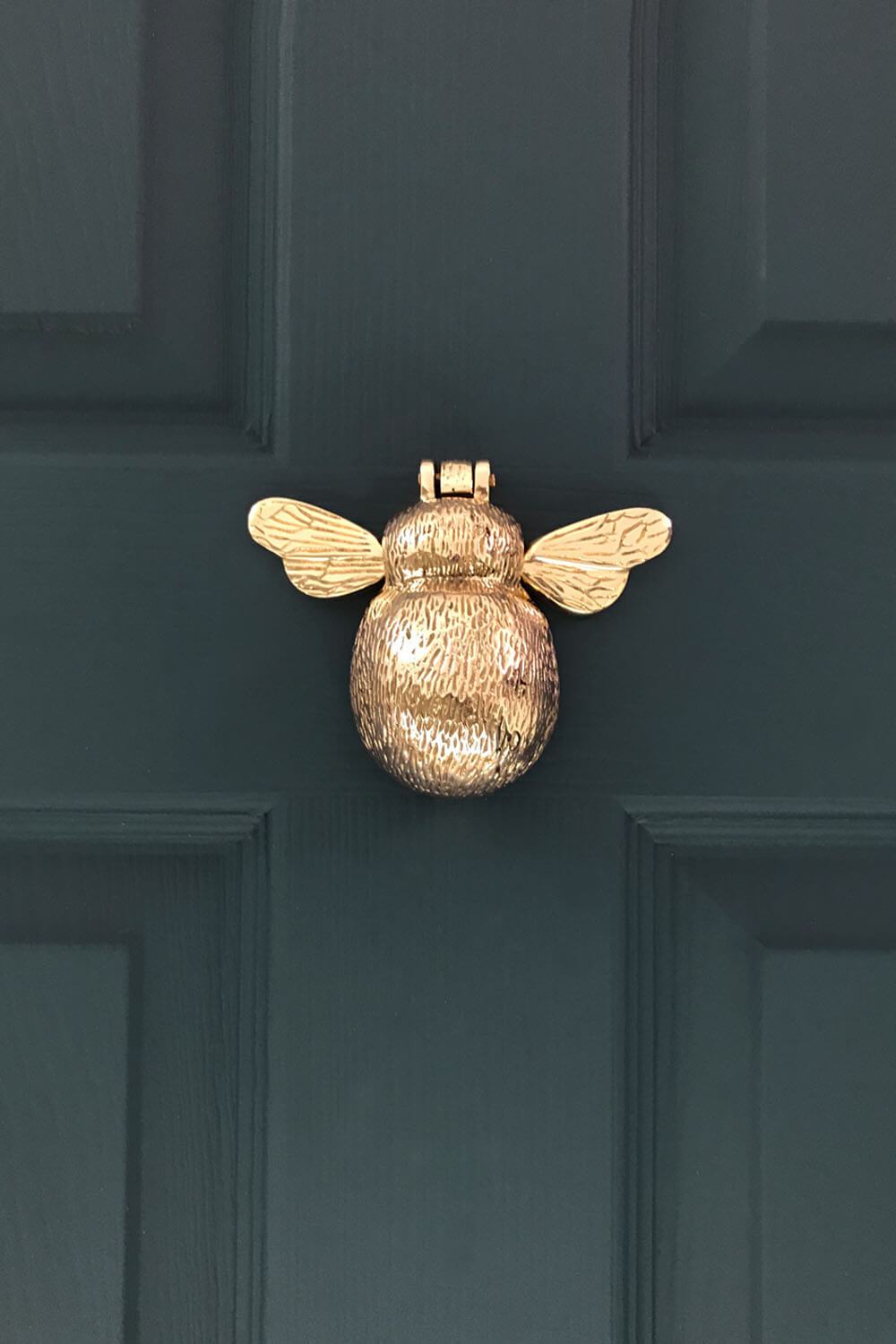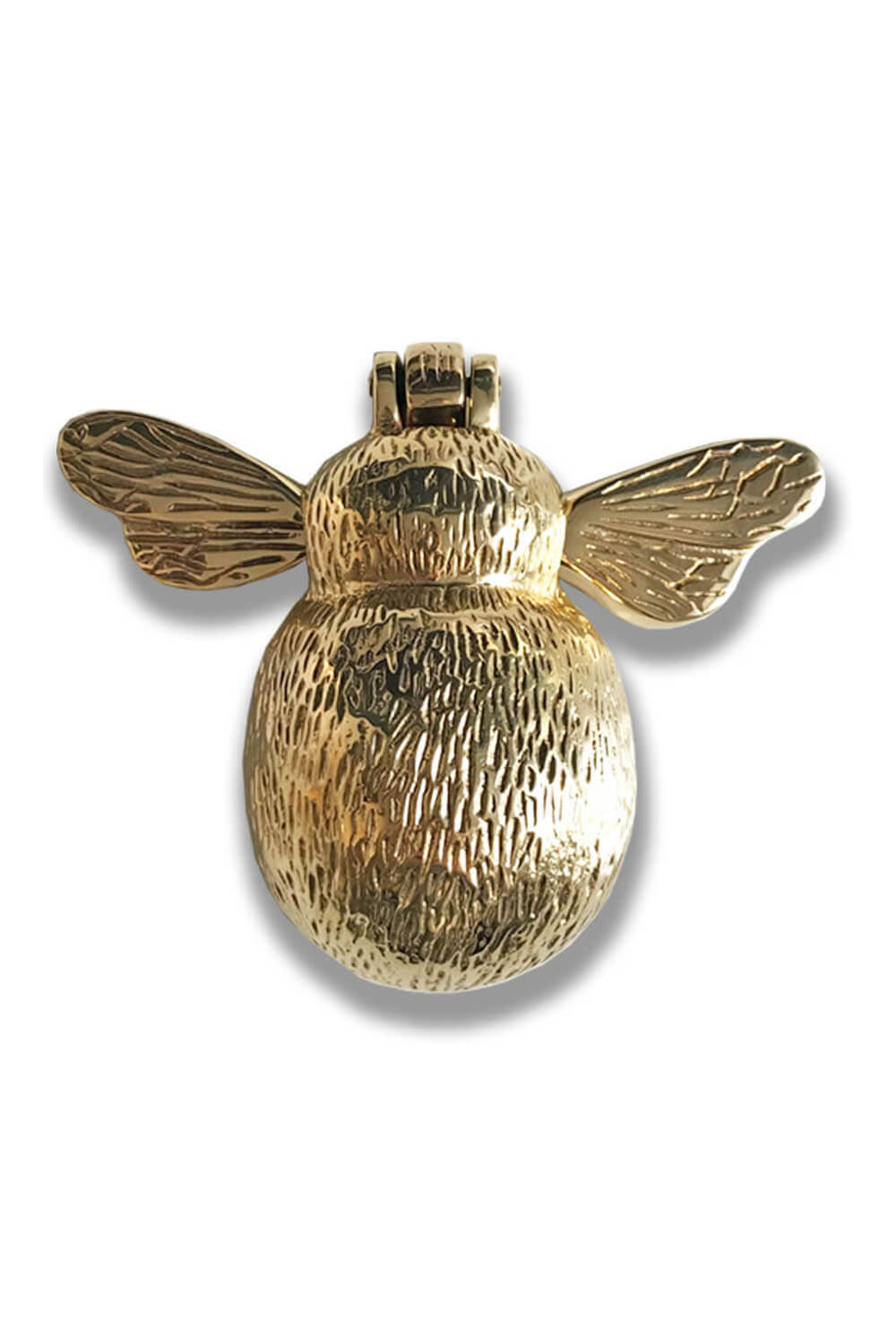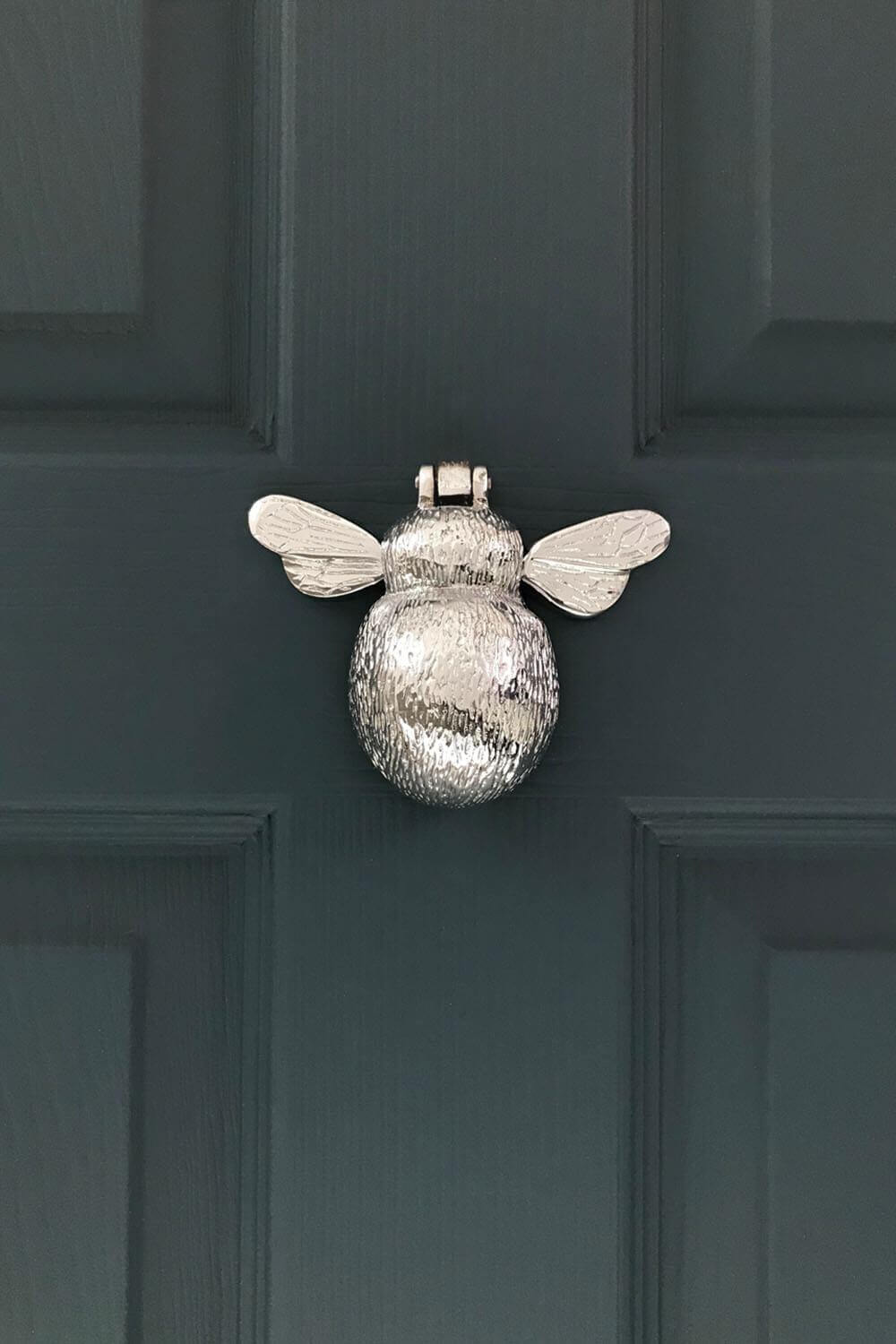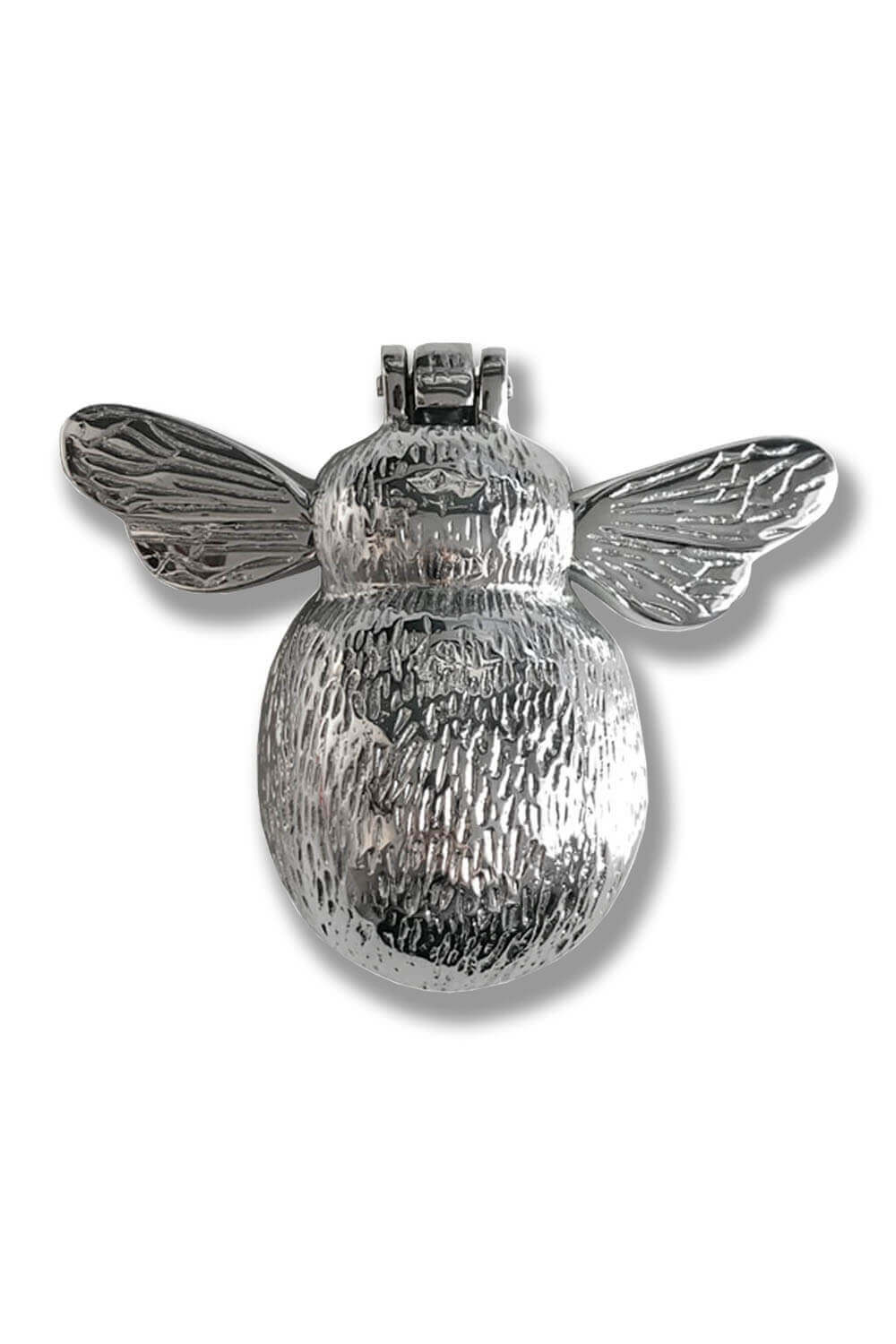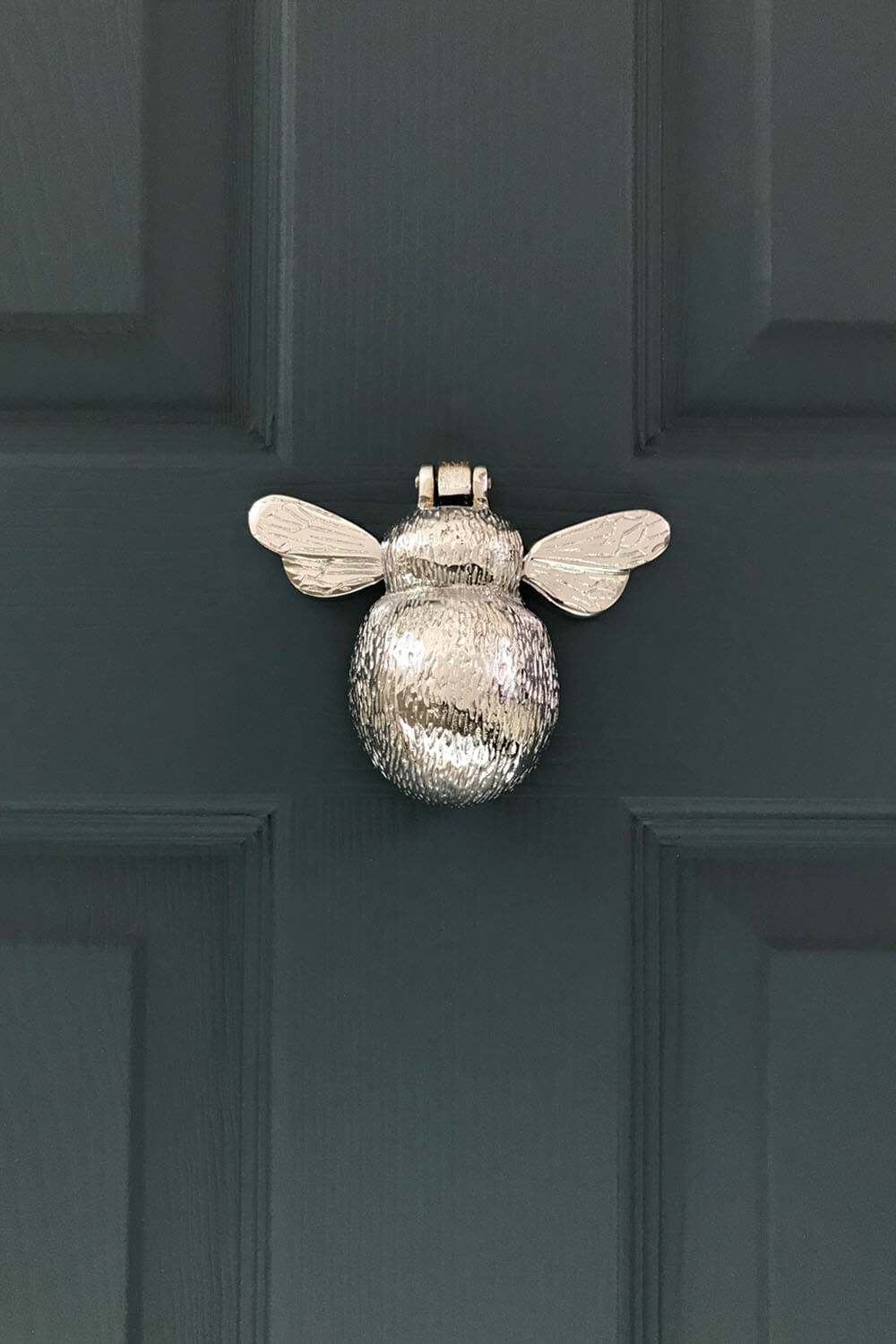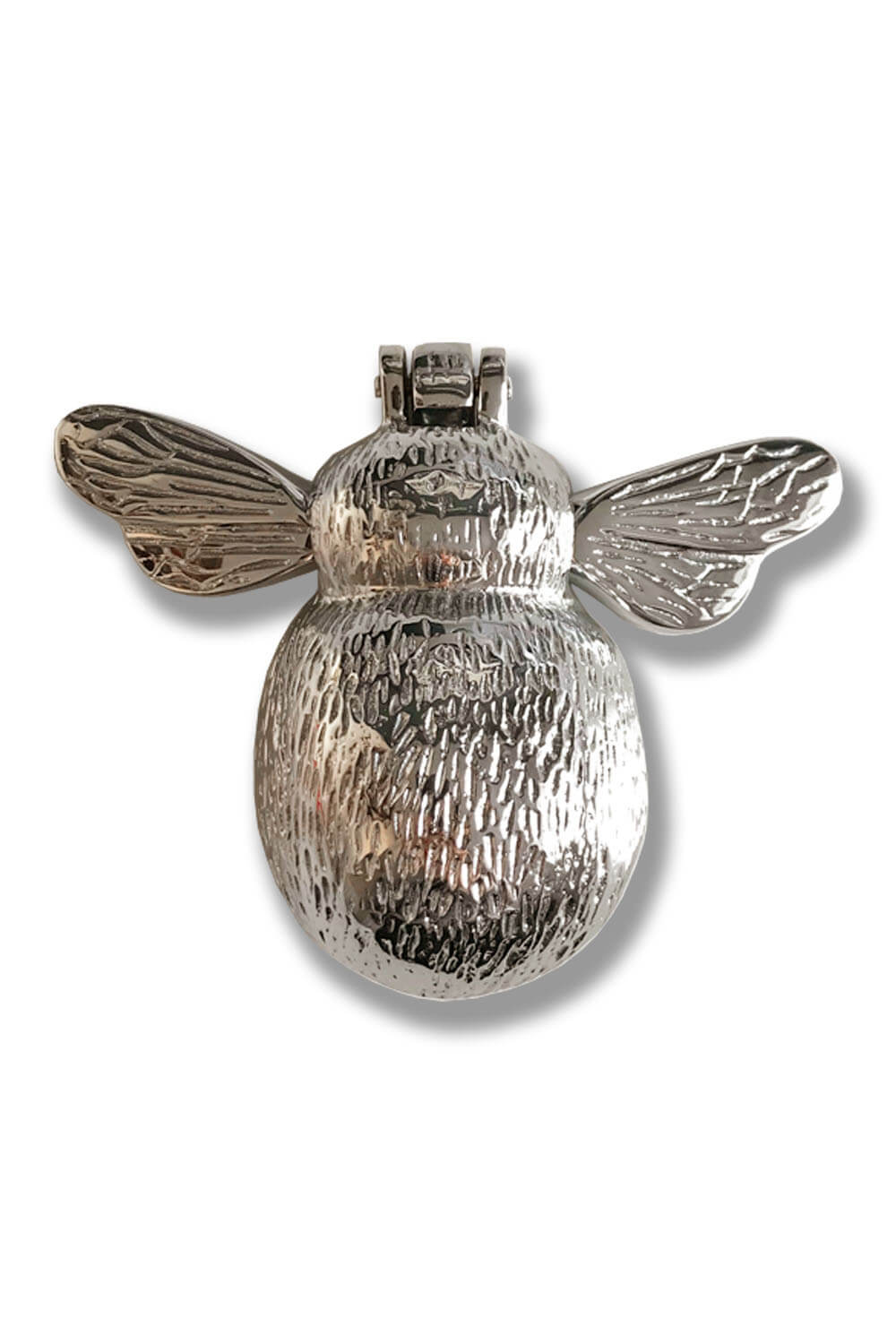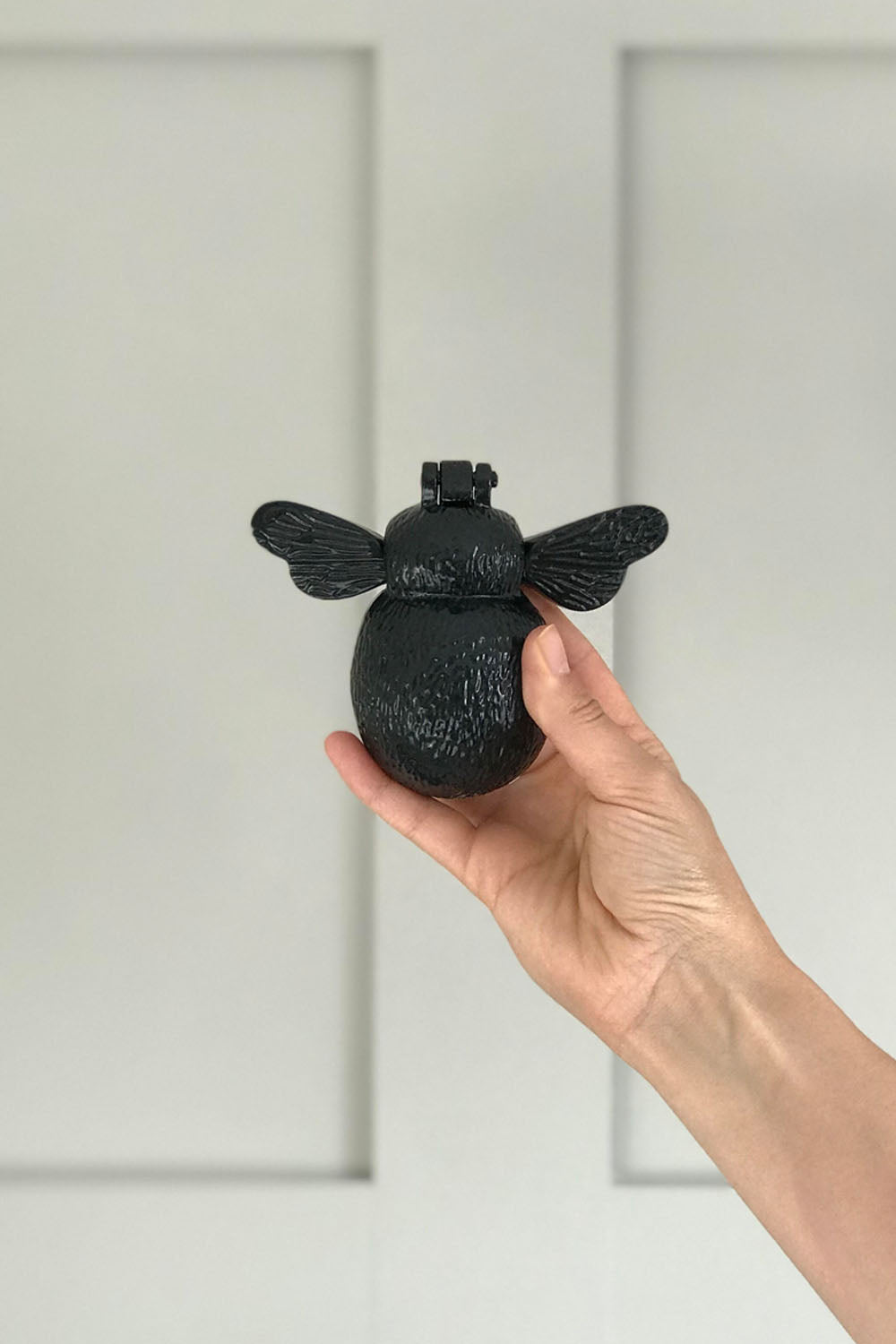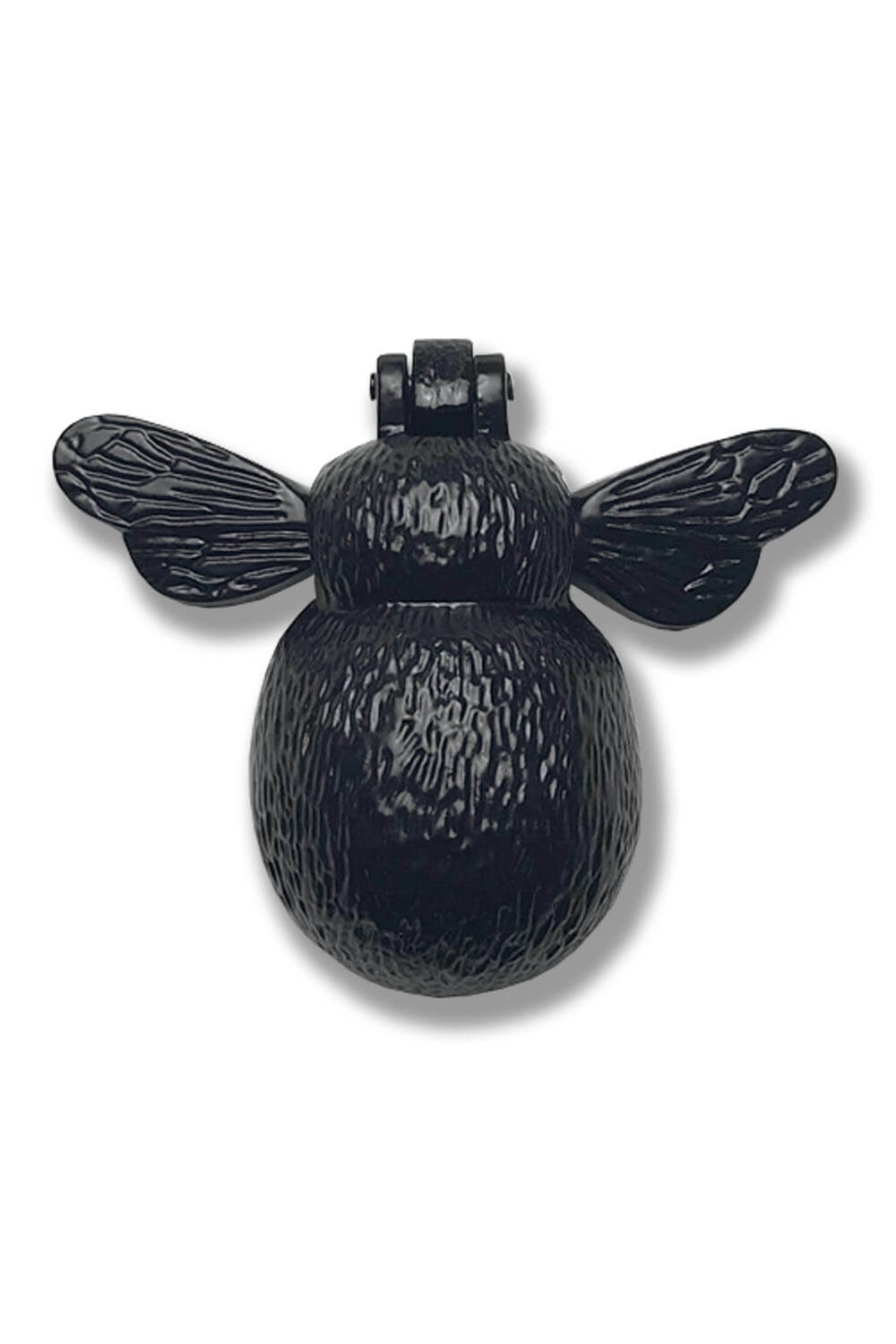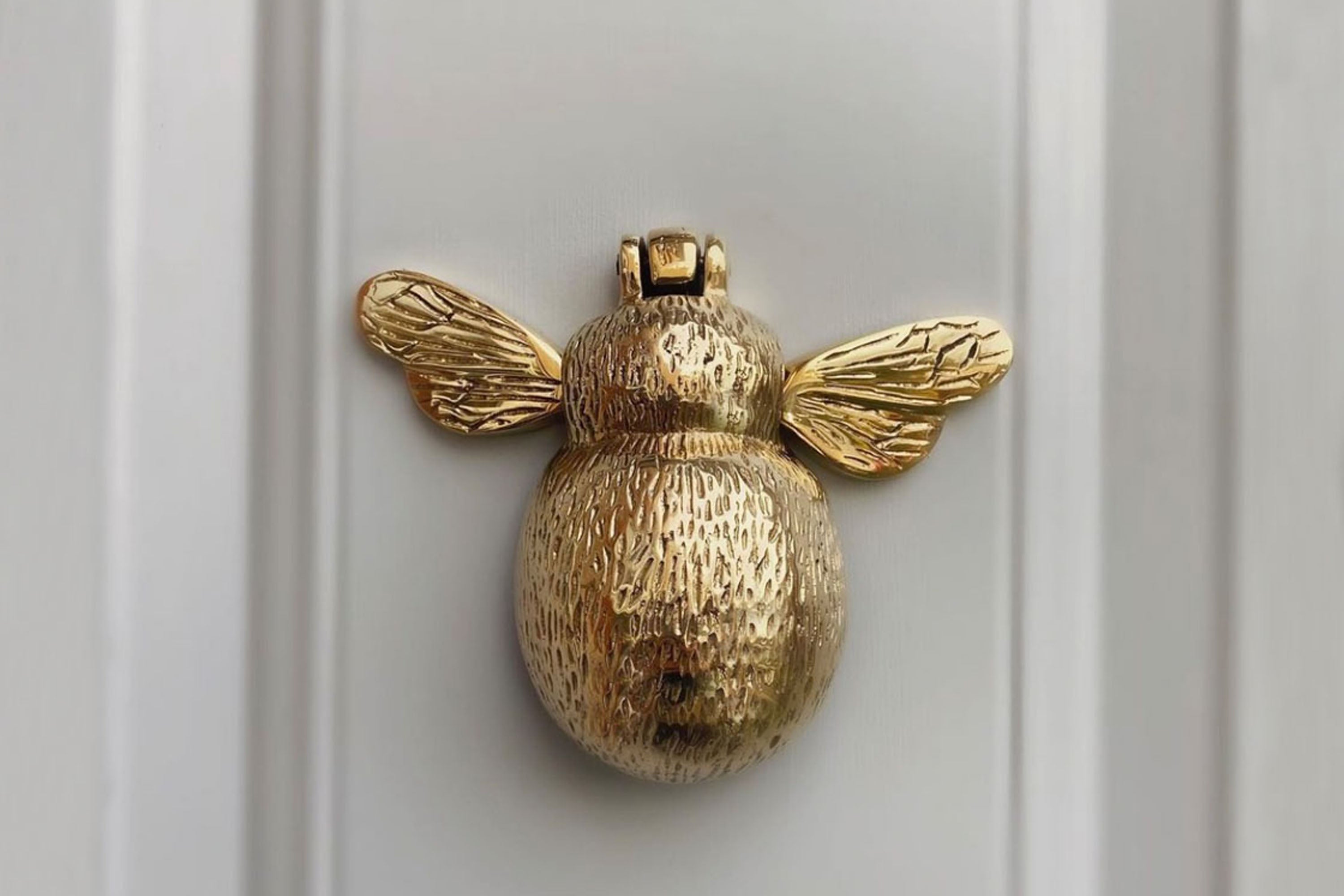
How To Clean A Door Knocker
Door knockers of all shapes, sizes and finishes are exposed to the elements when positioned on an exterior door. Weather and oxidisation can result in your door knocker taking on a tarnished or dull appearance over time. To ensure your door knocker remains looking as good as it did when new, as well as appearing inviting to visitors, we recommend that you regularly clean and polish your door knocker. With a little care your door knocker should maintain its finish for years!
Identifying the material and finish of your door knocker
A key first step is to identify the material and/or finish of your door knocker, as this will determine the method of cleaning needed. Each material has a slightly different process for cleaning that's tailored to the properties of the finish. There are five popular finishes for door knockers:
1. Un-lacquered Solid Brass
Un-lacquered solid brass door knockers feature a deep golden colouring and will age over time, taking on a duller antique finish. The ageing of the door knocker should be consistent across all surfaces. Un-lacquered brass will not rust, it will only tarnish and take on an aged appearance.
2. Lacquered Solid Brass
Similar to un-lacquered brass, lacquered brass has a deep golden colouring. Upon close inspection, if your brass door knocker has been fitted to your door for a number of months and does not have even tarnishing, or has areas that are still highly polished, then the likelihood is that it has been lacquered.
To maintain a highly polished finished, some brass door knocker manufacturers use a clear lacquer to protect their products. This provides a virtually invisible coating over the entire product that seals and protects the brass from the atmosphere. Lacquered brass won't naturally age and over time will require re-lacquering to maintain its finish.
3. Chrome Plated
You can identify a chrome door knocker as they often have a high-shine finish and a slight blueish tint to the silver colouring of the plating.
4. Nickel Plated
Nickel door knockers often can be identified by the slight yellowish tint to the silver colouring of the plating. Nickel ages naturally over time and takes on a duller antique finish, loosing its shine.
5. Black Powder Coated
Black door knockers are easily identifiable as they feature a rich matte black powder coating finish.
The below image showcases our four different finishes of bee door knockers:
Remove the door knocker prior to cleaning
We recommend that you remove your door knocker from the door prior to cleaning. Removing the door knocker will ensure that you can clean any dirt or grime that may have accumulated under or around the edges of the door knocker. If you choose not to remove the door knocker from the door, please be aware that during cleaning you may find that this dirt or grime runs down the door and causes staining to the doors overall finish. Cleaning the door knocker whilst it's attached to the door, may also result in scratching or changes to the finish of your door.
All of our door knockers can be easily removed from your door prior to cleaning. For our Fox, Owl, Shell and Bee door knockers; simply unscrew the two screws that hold the door knocker to the door by using a Phillips head screwdriver. To remove the Dragonfly door knocker, unscrew the nuts located on the inside face of your door, then slide the bolt out of the door from the front.
How to clean an un-lacquered solid brass door knocker
All Coates & Warner solid brass door knockers feature an un-lacquered finish, meaning they haven't had a protective coating applied to the brass. As a result, our brass door knockers will age naturally over time and take on a duller, antique finish unless regularly polished.
If you wish to maintain an un-lacquered brass door knockers highly polished finish, we recommend that every 1-2 months you clean it using a suitable brass polish, for example, Brasso. Simply apply a small amount of Brasso to a clean soft cloth and rub it into the brass door knocker in a circular motion, ensuring an even distribution. Once applied, leave for a few minutes before buffing with a new clean soft cloth to bring out the shine. Following this treatment, your un-lacquered brass door knocker should be bright and shiny once again!
If your door knocker has been fitted to your door for a number of months and you prefer the duller antique finish that has developed, we recommend that you clean your door knocker every 3-6 months to remove any oxidisation that's built up on the brass. You can either clean the door knocker with hot soapy water and a soft sponge, drying thoroughly before refitting. Alternatively, you can use a small amount of brass cleaner, such as Brasso. To ensure you maintain the ages look and don't restore the full shine of the door knocker, give a more gentle polish and apply pressure only to the raised surfaces as this will mean that the crevices are left to darken over time giving a more defined and well worn appearance.
How to clean a lacquered solid brass door knocker
A different cleaning method is required for a brass door knocker with a lacquered finish. Lacquered brass should not be cleaned with a brass polish as this can scratch or even remove the lacquer from the metal. A door knocker that has a lacquered finish should only be cleaned in warm soapy water with a soft cloth. The door knocker can be soaked in the water and then gently rubbed clean with the soft cloth. Once you're satisfied that all dirt has been removed, rinse the door knocker with clean water and then dry with another clean, soft cloth. We recommend leaving the door knocker in a sunny spot for a couple of hours to fully air dry before refitting.
If the lacquer on your door knocker has been damaged, cleaning may result in different finishes being achieved. We recommend that you send your door knocker to a professional for re-lacquering.
How to clean a chrome plated door knocker
All Coates & Warner chrome door knockers are manufactured from solid cast brass and then electro-plated with a chrome finish. This chrome plating provides the door knocker with a corrosion-resistant and long-lasting shiny finish.
Over time however, the shiny finish of the chrome will become duller and as a result we recommend cleaning your chrome door knocker every 3-6 months to maintain this highly polished finish. If you live near the coast where there is a higher salt content in the air, we recommend cleaning your door knocker more frequently to remove any salt deposits that build up and protect its finish.
To clean a chrome door knocker, soak it in hot soapy water and then gently rub clean with a soft cloth or non-abrasive sponge. As you're cleaning, rinse the cloth or sponge frequently in order to dispel the dirt that has begun to loosen and break free from the door knocker. Once all grime and dirt has been removed, rinse the door knocker with clean water and then dry with another clean, soft cloth. Once hand dried, we recommend leaving the door knocker in a sunny spot for a couple of hours to fully air dry.
The cleaning method advised in this guide involve neither harsh chemicals nor heavy-duty abrasive cleaning tools. Chrome plating can be scratched even by a scouring pad, so avoid the temptation to use a sharp edge on stubborn dirt.
How to clean a nickel plated door knocker
Nickel door knockers are usually manufactured from a base metal and then electro-plated with a nickel coating. All Coates & Warner nickel door knockers are manufactured from solid brass and then plated with a high quality thick nickel finish. The nickel plating used will age naturally over time and take on a duller antique finish.
To clean a nickel door knocker, soak it in hot soapy water and then with a soft cloth or non-abrasive sponge gently rub clean. Ensure that you rinse the cloth or sponge frequently during cleaning in order to remove the dirt that has begun to loosen and break free from the door knocker. Once you're satisfied that all dirt and grime has been removed, rinse the door knocker with clean water and then dry with another clean, soft cloth. We recommend leaving the door knocker in a sunny spot for a couple of hours to fully air dry before refitting.
If you have noticed any persistent blemishes on the nickel, then use a suitable metal cleaner following washing with soapy water. Finally, polish the door knocker with a soft cloth to keep your nickel plating strong and lustrous for years to come.
How to clean a black powder coated door knocker
Coates & Warner black door knockers are cast from solid iron and then powder coated in a thick, matte black finish. To keep your black powder coated door knocker rich in colour and dirt free, we recommend cleaning regularly; every 1-3 months.
To clean a black powder coated door knocker, soak it in hot soapy water and then gently rub clean with the soft cloth or non-abrasive sponge. Ensure that you rinse the cleaning cloth regularly in order to dispel any dirt that has built from the door knocker. Once all the grime and dirt has been removed, rinse the door knocker with clean water and then dry with a soft cloth. Once the door knocker has been hand dried, leave it on a table or windowsill in a sunny spot for a couple of hours until it has fully air dried.
Black powder coated door knockers can appear to rust at the hinge, this is due to raw steel in the hinge coming in contact with water and surface rust developing. This rust can be wiped off easily with a slightly damp cloth, however to prevent this from occurring we recommend applying WD40 to the hinge area every 2-4 weeks, providing lubrication and layer of protection.
The cleaning method advised for black door knockers does not use harsh chemicals nor heavy-duty abrasive cleaning tools. The black powder coating can become scratched even by a non-scratch scouring pad, so please ensure to you use the correct soft sponge or cloth when cleaning.
Mistakes you need to avoid
When cleaning your door knocker there are a number of key considerations that you need to be aware of:
- We recommend that you avoid using abrasive cleaning cloths, metal-bristled brushes, or steel wool; these will scratch the surface of your door knocker and can damage the brass, chrome, nickel or black finish.
- Don't use harsh and abrasive chemicals to clean your door knocker. Non-brass door knockers are electro-plated with a finish such as chrome, strong chemicals can cause the plating to weaken or thin, resulting in the base material beginning to show through and the colour changing.
- There are a wide range of alternative cleaning methods listed on other websites across the internet, from applying tomato ketchup or tooth paste to brass door furniture, to using vinegar on chrome finishes. We strongly advise to only use the cleaning materials recommended in this guide, such as washing up liquid or Brasso. These traditional cleaning products will not adversely impact the finish of your door knocker and will only enhance the finish. Using a non-cleaning product could result in the finish of your door knocker irreversibly changing.
Need more help?
If you need any further advise regarding cleaning your door knocker, please do not hesitate to get in touch with us and a member of our friendly team will guide you through the cleaning process.
Please note, the cleaning instructions outlined are for guidance only. If your door knocker changes in appearance or texture after cleaning, Coates & Warner is under no obligation to repair, exchange or provide a refund for the product.
Discover Our Door Knockers


